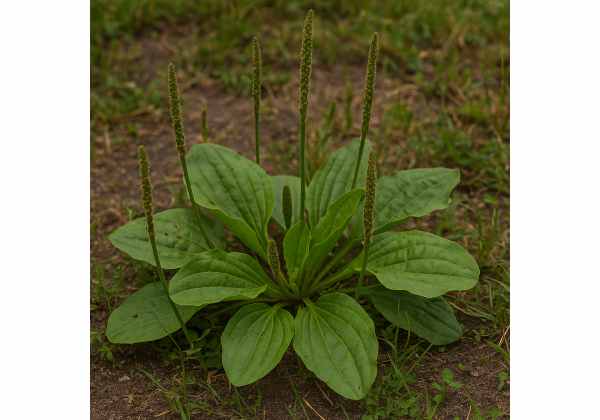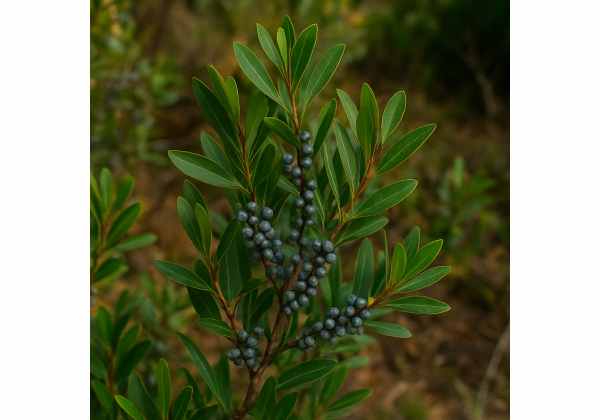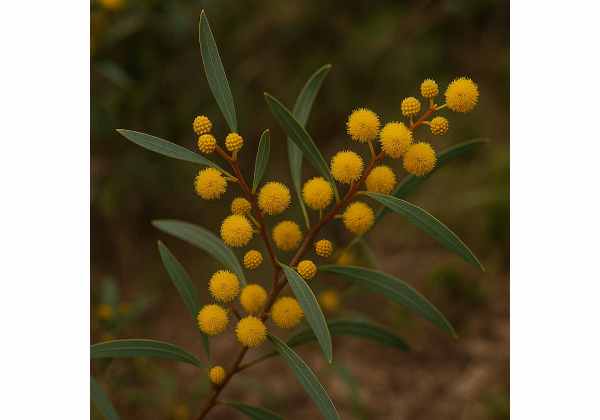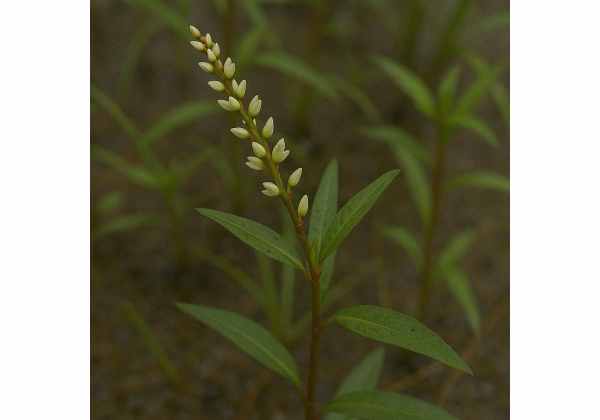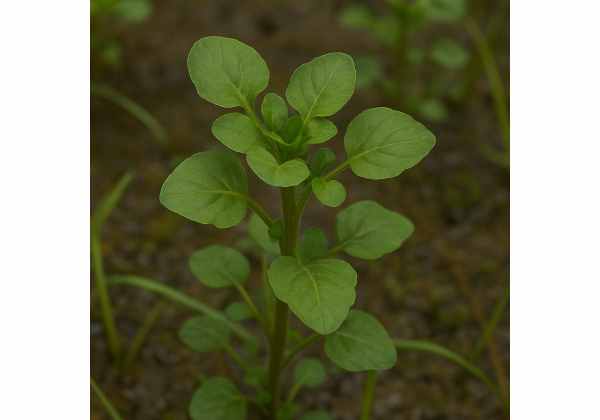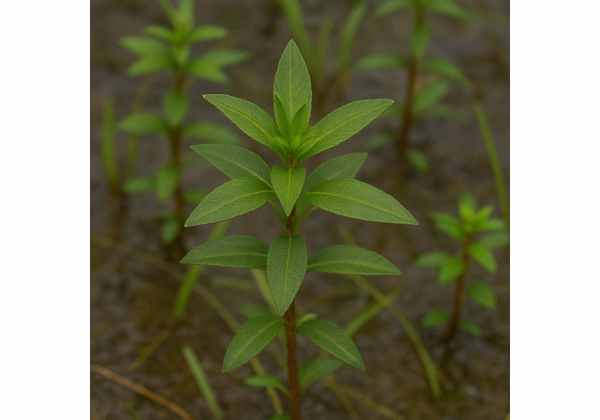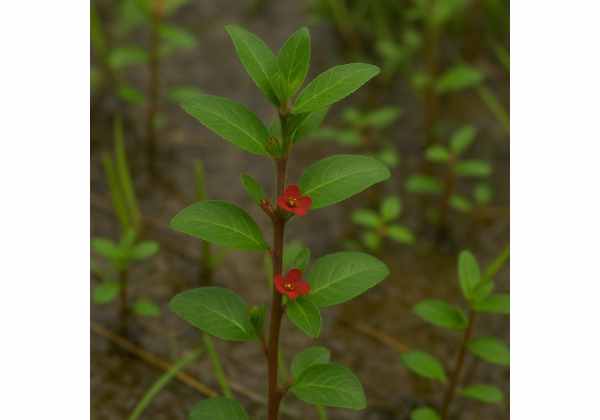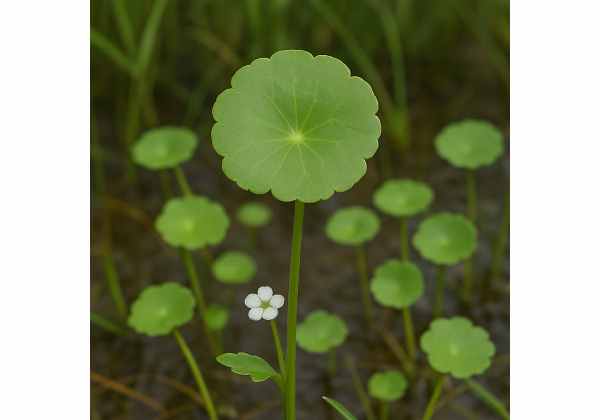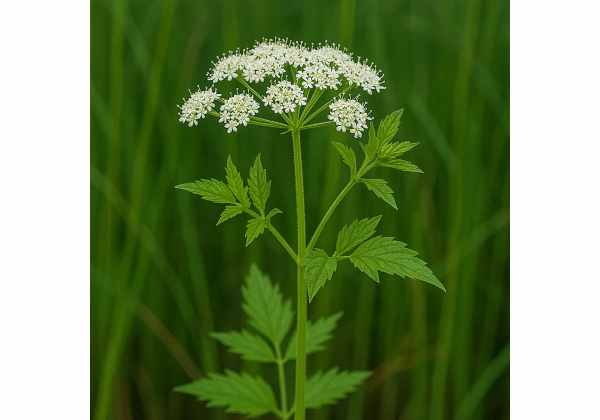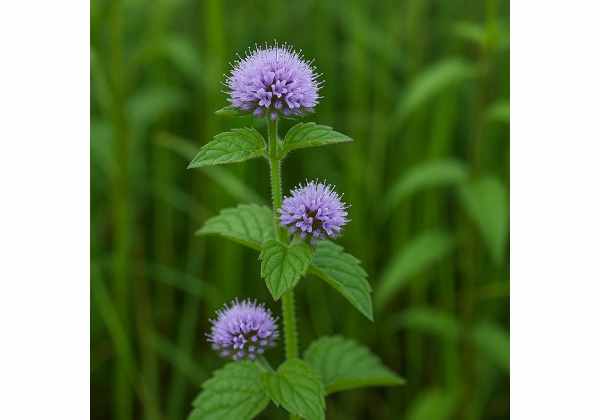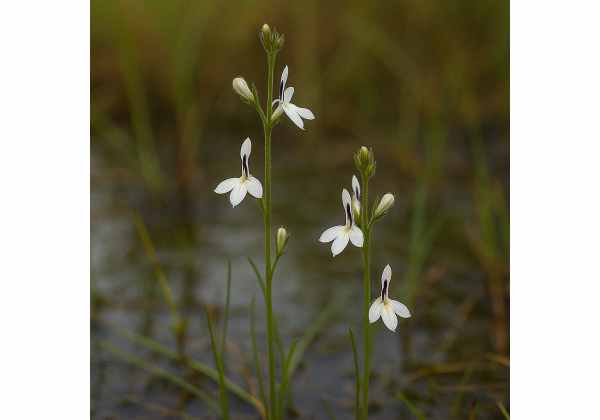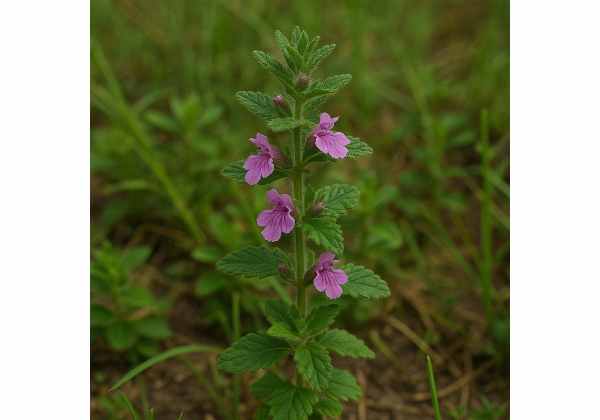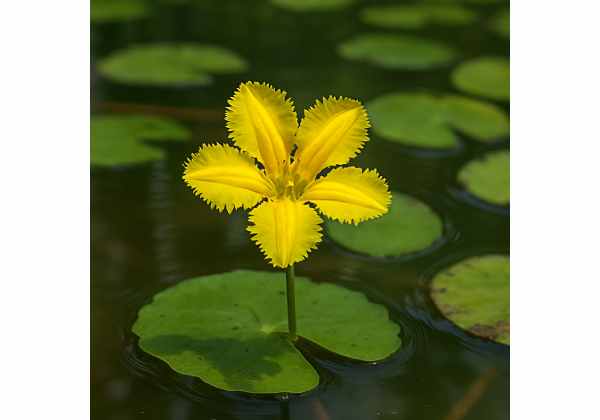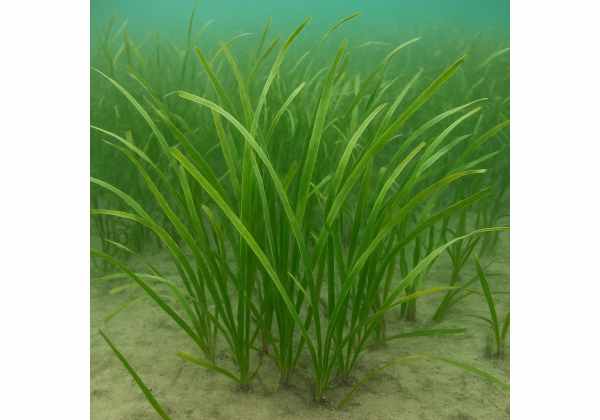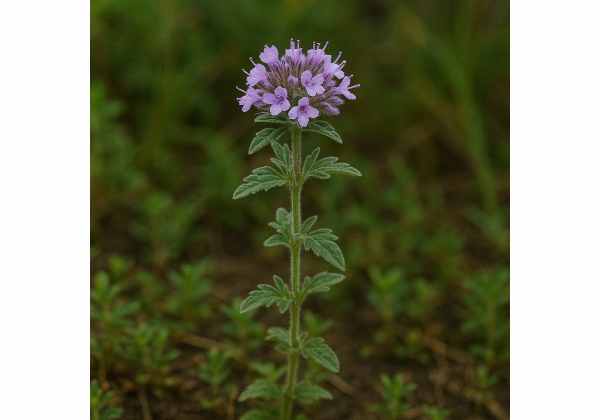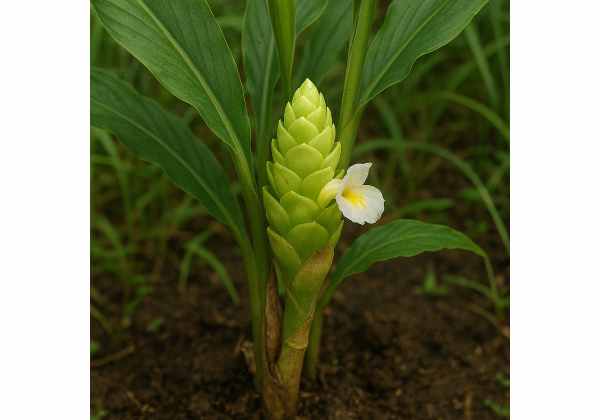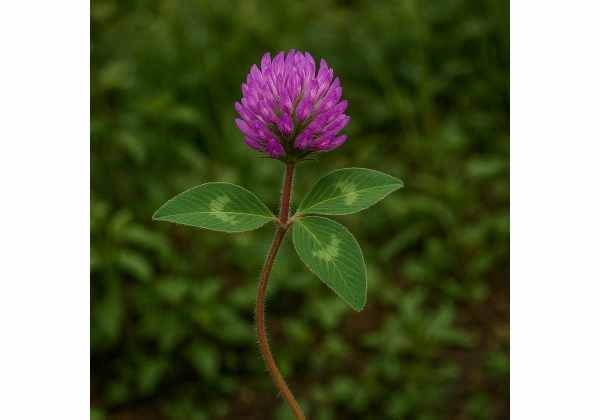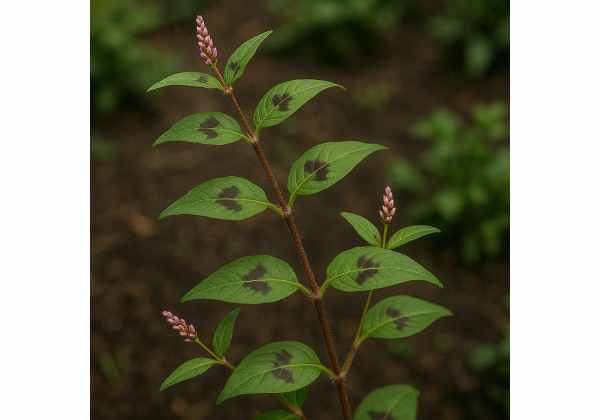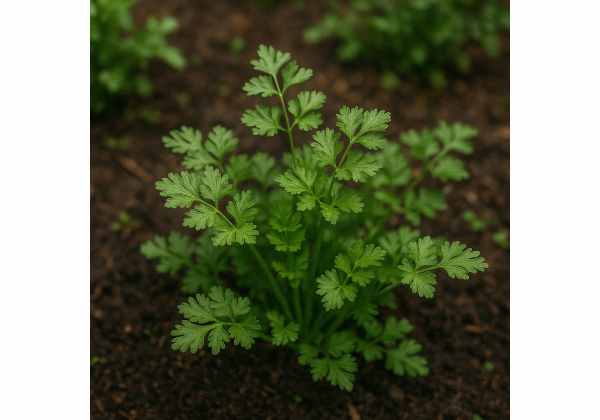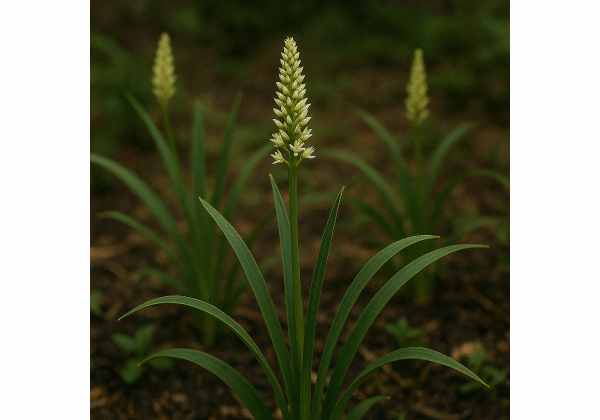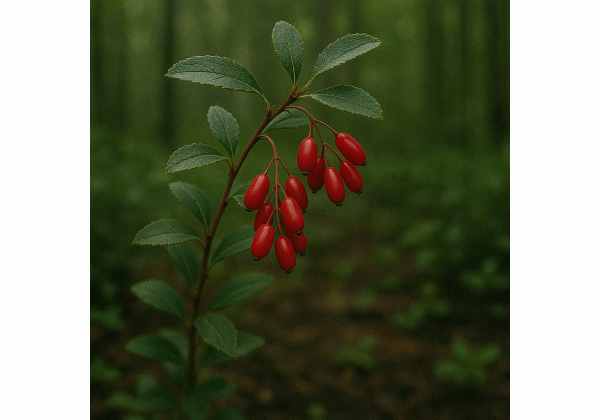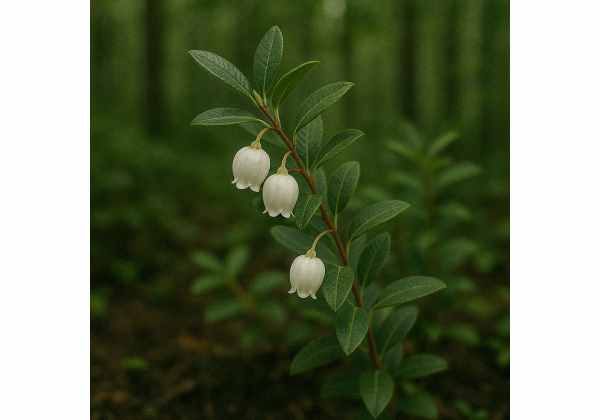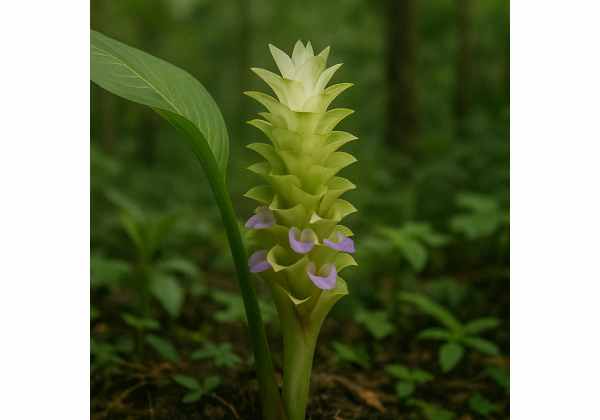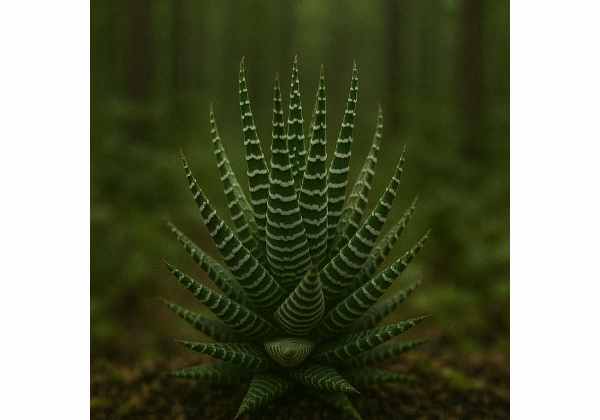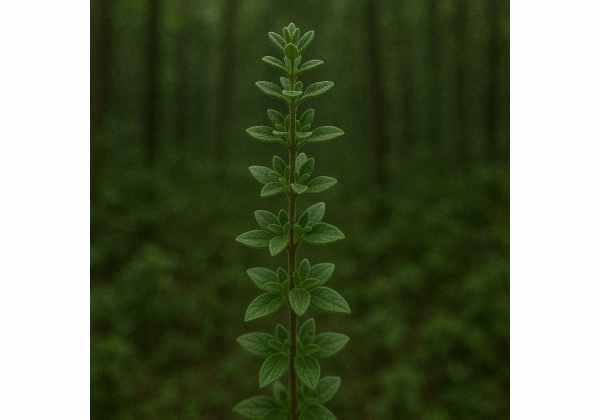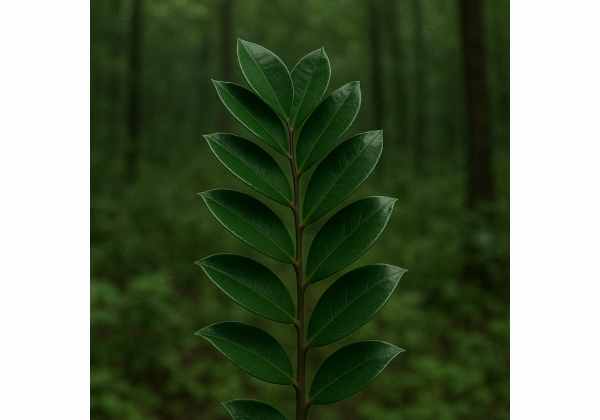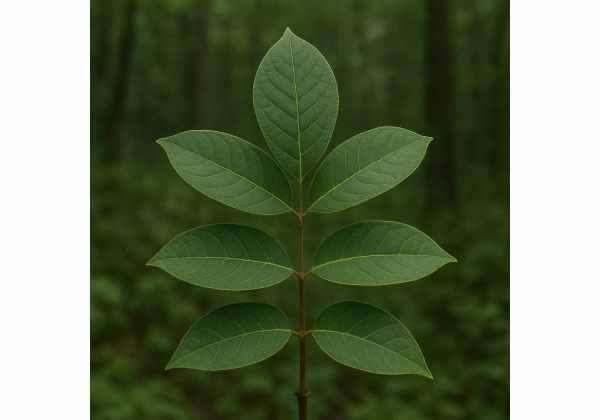Waybread: Key Benefits, Healing Properties, Main Ingredients, and Herbal Uses
Waybread, more commonly known as plantain (Plantago major), is a time-honored medicinal herb revered for its wide range of healing properties and nutritional applications. Celebrated for its rich content of bioactive compounds such as aucubin, allantoin, flavonoids, and mucilage, waybread has been traditionally used to support digestive health, soothe inflammation, accelerate wound healing, and promote respiratory wellness. This versatile...
Wax Myrtle: Health Benefits, Astringent Properties, Key Ingredients, and Applications
Wax myrtle, also known as bayberry (Morella cerifera), is a versatile shrub valued in traditional and modern herbalism for its potent medicinal properties, aromatic foliage, and culinary, cosmetic, and ecological uses. Its leaves, bark, and berries have long been used to support digestive health, enhance immune function, soothe inflammation, and provide gentle astringency. Wax myrtle is rich in active...
Wattle Seed: Digestive Support Benefits, Healing Properties, Ingredients, and Practical Applications
Wattle seed, derived from various Acacia species native to Australia, has emerged as a nutritional powerhouse celebrated for its rich flavor, impressive nutrient profile, and traditional medicinal value. Packed with protein, dietary fiber, minerals, and antioxidants, wattle seed supports energy, digestive health, blood sugar balance, and natural resilience. Traditionally used by Indigenous Australians as a vital food and medicine,...
Waterwort: Benefits, Anti-Inflammatory Properties, Active Compounds, and Uses
Waterwort is a lesser-known aquatic herb that quietly excels in both its ecological role and its value as a traditional medicinal plant. Found in fresh and slow-moving waters worldwide, waterwort is renowned for its calming, detoxifying, and tissue-supportive effects. This adaptable herb is packed with mucilage, flavonoids, minerals, and natural antioxidants, which together provide benefits for the digestive system,...
Water-pepper: Health Benefits, Circulatory Properties, Medicinal Uses, and Safety
Water-pepper (Persicaria hydropiper, formerly Polygonum hydropiper) is an intriguing wild herb with a bold, peppery flavor and a long history of traditional use in both medicine and cuisine. This remarkable aquatic plant is rich in active compounds such as polygodial, flavonoids, tannins, and essential oils, lending it anti-inflammatory, analgesic, antimicrobial, and circulation-boosting properties. Historically prized for soothing digestive complaints,...
Watercress: Health Benefits, Cardiovascular Properties, Medicinal Uses, and Safety
Watercress, a vibrant aquatic herb, stands out for its rich nutrient content and potent medicinal properties. Packed with antioxidants, glucosinolates, vitamins A, C, K, and vital minerals, watercress offers powerful anti-inflammatory, detoxifying, and immune-boosting benefits. Traditionally used to promote digestion, cleanse the blood, and support respiratory wellness, watercress finds its way into both culinary dishes and natural remedies. Its...
Water Starwort: Benefits, Anti-Inflammatory Properties, Main Compounds, and Uses
Water starwort is an adaptable aquatic herb with a remarkable ability to thrive in ponds, streams, and wetlands. Known for its soothing, anti-inflammatory, and cleansing properties, water starwort is rich in mucilage, polyphenols, vitamins, and minerals that support digestive health, skin healing, and immune resilience. Its traditional applications span herbal infusions, poultices, and nutritious greens in wild foraging cuisine....
Water Purslane: Health Benefits, Skin Care Properties, Key Compounds, and Dosage Information
Water purslane, a resilient aquatic herb, is celebrated for its diverse health benefits, vibrant nutritional content, and long history in traditional medicine. Rich in antioxidants, polyphenols, omega-3 fatty acids, mucilage, vitamins, and minerals, water purslane offers notable anti-inflammatory, detoxifying, and wound-healing properties. Used worldwide for promoting digestive health, soothing skin irritations, and supporting heart wellness, water purslane is prized...
Water Pennywort: Health Benefits, Cognitive Properties, Key Ingredients, and Applications
Water pennywort is an extraordinary aquatic herb, cherished worldwide for its exceptional healing benefits and rich nutritional profile. Recognized for supporting cognitive function, enhancing skin health, and promoting detoxification, water pennywort boasts potent active compounds including asiaticoside, madecassoside, triterpenes, flavonoids, and essential vitamins. Its traditional and contemporary uses range from herbal teas and topical remedies to culinary applications and...
Water Parsnip: Health Benefits, Detoxification Properties, Key Ingredients, and Applications
Water parsnip stands out among aquatic herbs for its remarkable healing properties and diverse applications in both traditional and modern herbal medicine. Packed with beneficial active compounds—including essential oils, flavonoids, coumarins, and vital nutrients—water parsnip is valued for its ability to support digestive health, reduce inflammation, and encourage natural detoxification. Its unique phytochemistry underpins a spectrum of medicinal uses,...
Water Mint: Cooling Properties, Antimicrobial Uses, Essential Oils, and Research
Water Mint (Mentha aquatica) is a fragrant, fast-growing perennial that thrives along streambanks, marshes, and pond edges. Renowned for its cooling menthol-rich essential oils, this versatile herb offers digestive relief, respiratory ease, and soothing skincare benefits. Its key active compounds—including menthol, menthone, rosmarinic acid, flavonoids, and tannins—work in synergy to deliver anti-inflammatory, antimicrobial, and antioxidant actions. From invigorating teas...
Water Lobelia: Uses, Digestive Soothing Properties, Core Constituents, and Guidelines
Water Lobelia (Lobelia dortmanna) is an elegant aquatic perennial prized for its slender, grassy foliage and delicate white to pale pink blooms that float just above the water’s surface. Rich in piperidine alkaloids such as lobeline and lobelanine, as well as flavonoids, tannins, and mucilaginous polysaccharides, this charming herb offers respiratory support, mild diuretic action, and soothing digestive relief....
Water Germander: Medicinal Properties, Iridoid Compounds, Benefits, and Safety Measures
Water Germander (Teucrium scordium) is a resilient aquatic perennial treasured for its clusters of small lilac blooms and deeply lobed, glossy leaves. Rich in iridoids, flavonoids, and essential oils, this herb delivers anti-inflammatory, antimicrobial, and diuretic actions. Traditionally, herbalists brew it as a digestive tonic, apply it topically for minor skin irritations, or sip it as a gentle detoxifying...
Water Fringe: Benefits, Respiratory Support, Active Compounds, and Precautions
Water Fringe (Hottonia palustris) is a charming aquatic herb renowned for its elegant feathery foliage and delicate star-shaped blossoms that grace ponds, marshes, and freshwater streams. Beyond its ornamental allure, this unique perennial harbors a wealth of bioactive constituents—such as iridoid glycosides, flavonoids, and mucilaginous polysaccharides—which together deliver anti-inflammatory, antioxidant, and soothing benefits. Traditionally employed in herbal medicine, Water...
Zostera: Benefits, Uses, Anticoagulant Properties, and Key Nutrients
Zostera, commonly known as eelgrass or sea ribbon, is a genus of marine seagrasses valued for its rich stores of bioactive nutrients and therapeutic compounds. Packed with sulfated polysaccharides, polyunsaturated fatty acids (notably omega-3s), flavonoids, phenolic acids, and essential minerals—magnesium, calcium, iron, and iodine—eelgrass exhibits antioxidant, anti-inflammatory, anticoagulant, and immunomodulatory properties. Traditional coastal communities have long harnessed Zostera for...
Ziziphus: Benefits, Uses, Digestive Soothing Properties, and Core Nutrients
Ziziphus, commonly known as jujube or Chinese date, is a versatile genus of shrubs and small trees prized for its nutrient-dense fruits, rich in vitamins C and B-complex, polyphenols, flavonoids, and minerals like potassium and iron. Traditional medicine systems—from Ayurvedic to Traditional Chinese Medicine—have long harnessed Ziziphus species for digestive support, immune fortification, stress relief, and sleep enhancement. Modern...
Ziziphora: Benefits, Uses, Circulatory Properties, and Active Phytochemicals
Ziziphora, a fragrant genus of aromatic flowering herbs in the mint family, boasts a long history of use in Mediterranean and Central Asian folk medicine. Rich in essential oils—principally pulegone, menthone, and thymol—alongside flavonoids, tannins, and rosmarinic acid, Ziziphora species deliver potent antioxidant, anti-inflammatory, and antimicrobial effects. Traditionally brewed as a tea for digestive ease, circulatory support, and respiratory...
Zingiber: Health Benefits, Digestive Properties, Active Compounds, and Applications
Zingiber, commonly known as ginger, is a globally revered rhizome notable for its robust flavor and profound health-promoting virtues. Packed with bioactive compounds—most famously gingerols, shogaols, and zingerone—this aromatic root delivers potent antioxidant, anti-inflammatory, and digestive-supportive actions. Traditional medicine systems across Asia have long used Zingiber officinale to alleviate nausea, soothe gastrointestinal discomfort, improve circulation, and bolster immunity. Modern...
Zincwort: Benefits, Uses, Antioxidant Properties, and Phytochemical Profile
Zincwort, a silvery-green perennial herb rich in bioavailable zinc and potent phytochemicals, has earned acclaim for its multifaceted health-supportive roles. Packed with essential minerals—especially zinc—alongside flavonoids, tannins, saponins, and vitamin C, this versatile plant delivers antioxidant, anti-inflammatory, and antimicrobial properties. Traditional healers have harnessed zincwort poultices for wound healing and skin rejuvenation, while teas and tinctures support immune resilience,...
Zigzag Clover: Benefits, Uses, Menopausal Support Properties, and Applications
Zigzag clover (Trifolium medium), a versatile wild legume, has long graced meadows and forest edges with its delicate pink blooms and trifoliate leaves. Beyond its ornamental charm, this humble herb packs a punch of health-supportive compounds—phytoestrogens, flavonoids, saponins, and essential minerals—that contribute to hormonal balance, cardiovascular wellness, and skin health. Traditional herbalists prized its mild astringency to soothe digestive...
Zig Zag Plant: Benefits, Uses, Cognitive Enhancement Properties, and Latest Research
Zig Zag Plant, known botanically as Huperzia serrata and commonly called zigzag clubmoss, has gained renown for its potent neuroprotective and cognitive-supportive virtues. Rich in huperzine A—an alkaloid that inhibits acetylcholinesterase—and fortified by antioxidants such as flavonoids and phenolic acids, this evergreen perennial exhibits memory-enhancing, anti-inflammatory, and antioxidant properties. Traditionally used in Chinese medicine to bolster mental clarity, reduce...
Zhoug: Benefits, Uses, Digestive Properties, and Culinary Applications
Zhoug, the vibrant green chili-herb condiment rooted in Yemeni and Levantine traditions, delivers a lively fusion of heat and freshness alongside an impressive suite of health benefits. Crafted from cilantro, parsley, chili peppers, garlic, cumin, cardamom, and olive oil, zhoug is rich in bioactive molecules—capable capsaicin, allicin, chlorophyll, flavonoids, and essential vitamins—that confer antimicrobial, anti-inflammatory, and antioxidant activities. Traditionally,...
Zhi-mu: Benefits, Uses, Neuroprotective Properties, and Key Ingredients
Zhi-mu, the rhizome of Anemarrhena asphodeloides, is a cornerstone of traditional Chinese medicine celebrated for its cooling, yin-nourishing, and heat-clearing properties. Rich in timosaponins, mangiferin, polysaccharides, and flavonoids, this versatile herb offers antipyretic, antidiabetic, neuroprotective, and anti-inflammatory effects. Clinically, zhi-mu features in classic formulas—such as Zhi Bai Di Huang Wan—to balance internal heat, soothe dryness, and support metabolic harmony....
Zereshk: Benefits, Uses, Medicinal Properties, and Phytochemical Constituents
Zereshk, the jewel-red dried barberry beloved in Persian cuisine, offers far more than a tangy flourish on fluffy rice. Packed with bioactive treasures such as berberine, vivid anthocyanins, quercetin, and essential micronutrients like vitamin C and potassium, it delivers potent antioxidant, anti-inflammatory, and antimicrobial effects. Traditional healers have long harnessed zereshk to ease digestion, support metabolic balance, and soothe...
Zenobia: Benefits, Skin-Healing Properties, Key Constituents, and Care Tips
Zenobia (Zenobia pulverulenta), commonly known as the honeycup shrub, is a hardy evergreen native to the southeastern United States, prized both as an ornamental and traditional remedy. Its leaves, flowers, and bark contain bioactive flavonoids, saponins, alkaloids, and essential oils—such as quercetin, kaempferol, and β-amyrin—that confer antioxidant, anti-inflammatory, and antimicrobial actions. Folk healers brewed its blossoms to soothe respiratory...
Zedoary: Benefits, Hepatoprotective Properties, Key Constituents, and Research
Zedoary (Curcuma zedoaria), also known as white turmeric, is a perennial herb celebrated for its aromatic, ginger-like rhizomes and potent therapeutic virtues. Rich in bioactive curcuminoids, sesquiterpenes, and essential oils—such as curcumenol, furanodiene, and cineole—Zedoary delivers anti-inflammatory, antioxidant, and antimicrobial benefits. Traditional healers in Southeast Asia and India have long employed its powdered root for digestive relief, menstrual cramp...
Zebra Plant: Health Benefits, Respiratory Properties, Phytochemical Profile, and Preparations
Zebra plant (Aphelandra squarrosa) is a striking tropical perennial known for its bold, variegated foliage and impressive phytochemical profile. Packed with flavonoids, phenolic acids, and specialized alkaloids, this houseplant offers more than aesthetic appeal: it supports respiratory comfort, mild anti-inflammatory action, and ambient air purification. Traditional practitioners have employed leaf extracts in poultices and infusions to ease coughs, soothe...
Zataria: Benefits, Digestive Properties, Essential Oils, and Research
Zataria (Zataria multiflora), often referred to as “Shirazi thyme,” is a fragrant perennial herb endemic to the arid regions of Iran and Pakistan. Renowned for its robust essential oils—rich in thymol, carvacrol, and p-cymene—this member of the Lamiaceae family provides potent antioxidant, antimicrobial, and anti-inflammatory effects. Folk healers have long employed Zataria teas and topical preparations to soothe digestive...
Zanzibar Gem: Benefits, Medicinal Properties, Indoor Air Quality Uses, and Care Tips
Zanzibar Gem, scientifically known as Zamioculcas zamiifolia, is a resilient, glossy-leaved houseplant native to Eastern Africa, celebrated for its capacity to enhance indoor air quality and well-being. Rich in bioactive phytochemicals—including flavonoids, saponins, and trace alkaloids—this succulent-like perennial offers mood-boosting, stress-reducing, and humidity-regulating benefits. Traditional healers have harnessed its leaf extracts for minor anti-inflammatory and analgesic applications, while modern...
Zanzibar copal: Health Benefits, Key Compounds, Healing Properties, and Research
Zanzibar copal is a fragrant, amber-hued resin harvested from East African trees in the Burseraceae family, prized for centuries in traditional healing and ceremonial incense. Rich in bioactive terpenoids, triterpenoids, and phenolic acids, this natural gum offers potent anti-inflammatory, antimicrobial, and antioxidant actions. In folk medicine, practitioners employ it to soothe respiratory ailments, promote skin regeneration, and ease joint...


